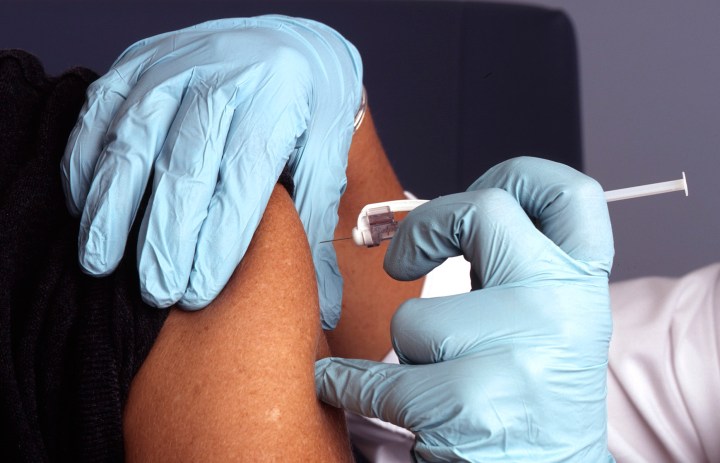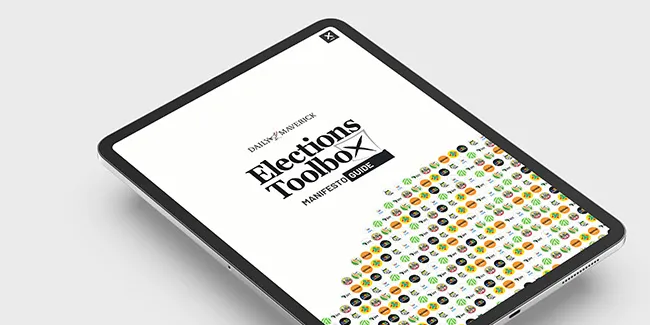BHEKISISA
The world could see a Covid-19 vaccine in early 2021 – here’s who will get it and how

Even if a jab is shown to work, there won’t be enough doses for everyone. Countries such as South Africa would need to make tough decisions about who it would give the vaccine to – and more importantly how to create a system to get it to them.
With hundreds of potential Covid-19 vaccines in development and a handful on the horizon, many companies are optimistic about having a jab ready by the beginning of 2021.
But testing vaccine candidates as fast and safely as possible is only the first step. The next part may prove to be the bigger challenge – distributing the vaccine and determining who needs it most.
While the US and Europe have been investing millions of dollars into procuring doses ahead of time, without knowing if that particular shot will work, not all countries can afford such deals.
Covax, an initiative run by the vaccine alliance Gavi, aims to ensure equitable access to a Covid vaccine when it becomes available. So far, South Africa has submitted a non-binding confirmation of intent to participate.
The agreement would grant the country access to vaccines at a reduced cost – but also comes with a catch. The number of doses procured would depend on how much South Africa can afford to pay and until all countries that signed up for Covax have received enough doses to vaccinate 20% of their populations, no one can ask for more.
Aside from solely relying on Covax, the South African government is trying to secure direct deals with pharmaceutical companies, according to Barry Schoub, chair of the Ministerial Advisory Committee (MAC) on Vaccines. Although even with these agreements and finance mechanisms, manufacturers won’t be able to produce nearly enough vaccine doses – at least initially – to cover all of the world’s 7.8 billion people.
Who gets a vaccine — and how do you decide?
The unpredictable nature of how many jabs South Africa will have access to means that the country’s rollout plan would need to be adjustable. This would include creating a strategy to decide who gets a vaccine based on how many shots are available.
Schoub, a virologist who was the founding director of the National Institute for Communicable Diseases (NICD), explains: “Even the wealthy countries will start with having a limited number of doses for a proportion of the population. And the middle-income countries like South Africa, which will utilise Covax in addition to negotiating with manufacturers directly, will be limited in the number of doses, certainly during 2021, and probably 2022 as well, so they have to be very careful about who are the priority groups.”
But how do you decide who is the priority?
The decision, says Schoub, is not a straightforward one to make and will include considerations such as protecting frontline healthcare workers, protecting the most vulnerable groups, like the elderly and those with underlying health conditions, or even perhaps targeting those who are spreading the virus, which the World Health Organisation (WHO) has warned is primarily young, mobile people.
In September, the WHO published preliminary guidance on how to identify priority groups for vaccine allocation. However, even this framework acknowledges that “priority groups cannot be simply ready off from the list of objectives” and beyond prioritising healthcare workers, those next in line to receive a jab will be largely dependent on a country’s epidemic and the situation at the time that a vaccine becomes available.
Similarly, the US National Academies of Sciences, Engineering, and Medicine (Nasem) released their own recommendations in early October. This opts for a phased approach, with about 5-10% of the population covered in the first rollout targeting frontline workers, the elderly and people with comorbid conditions who would be at risk of developing severe forms of Covid-19.
Both the WHO and Nasem’s plans also emphasise that distribution strategies should include disadvantaged populations who would be disproportionately affected by the disease, such as communities of colour.
The Covid-19 pandemic has highlighted that people of colour were at higher risk of developing more severe cases of the disease, with black people making up 33% of those hospitalised in June in the US. Although there is limited data available on infections among different racial groups, an August report in the Journal of General Internal Medicine found that black people were at a significantly higher risk – as high as 18-fold in one state – of dying than their white counterparts. This increased risk could be due to a prevalence of comorbid conditions within these populations, combined with lower access to healthcare services because of areas where black populations live being underserved, according to a June paper in Clinical Infectious Diseases. Another potential contributing factor, also mentioned in the June paper, could be living conditions for these communities which tend to make social distancing hard to maintain and a scarcity of water.
But the availability and affordability of Covid vaccines would make it hard for South Africa to provide all frontline workers, people with comorbidities, the elderly and disadvantaged populations with inoculations – at least initially.
According to Statistics South Africa, roughly 9% of the country’s population is above the age of 60. Almost 13% of South Africa’s population has diabetes, according to the International Diabetes Federation. Schoub says the country’s first available doses would likely only cover between 3-5% of the population – there would therefore not be enough vaccines to inoculate even just these two high-risk groups.
“Assuming you’ve got vaccines only for 3% of your population, you’d have to look at those that are in roles that are essential for societal functioning,” says Ames Dhai, a specialist ethicist at the South African Medical Research Council (SAMRC) and former director of the Steve Biko Centre for Bioethics at the University of Witwatersrand.
But essential workers, according to Dhai, include everyone on the frontlines – from healthcare workers and first responders to those working in transportation, banking or the food industry. That means that “even with 3%, you can’t actually give it to all of them”, warns Dhai, “meaning you need a more targeted, specific approach that starts with healthcare workers”.
A total of 228,739 health professionals were registered with the Health Professions Council of South Africa as of April 2020, the body’s latest annual report states. That is equal to 0.4% of South Africa’s population – but this excludes the country’s 54,180 community health workers.
Involving communities to ensure equal access in an African context
With its diverse population, South Africa has an additional challenge in trying to develop its own framework for making the difficult decision about who would be first in line to get a Covid jab. In her capacity as chairperson of the SAMRC Bioethics Advisory Committee, Dhai has been working on translating Western approaches to fair allocation into our local context.
“It’s critical for African voices to add not only to the debate but also to influence the implementation of immunisation equity,” she says. “It’s very, very important that vulnerable and disadvantaged people in remote, rural areas and urban areas be included. They should not be left behind.”
The decision of who gets a vaccine should include both science and ethics, according to Dhai. The basis for determining who gets a vaccine should be based on the best available evidence, she says, but a rollout plan should also be flexible so that it can be adapted, if necessary, when new scientific information becomes available.
“It’s not just putting together a framework, but involving communities and being transparent right from the outset,” says Dhai. “We must make sure that our communities actually understand why only certain parts of the populations are going to get the vaccine first because this will promote legitimacy, trust, and also a sense of ownership of such decisions.”
Creating an entirely new vaccine delivery system for South Africa
Determining who should get a Covid vaccine first is complicated, but so is the process of delivering it to priority groups.
South Africa would need to devise an entirely new vaccine delivery system – one aimed at immunising adults as opposed to the current setup that focuses on vaccinating children.
Most vaccinations in South Africa, such as those for measles and TB, are given to babies or children. The influenza programme, that targets broader society, is the closest exception. But a 2018 study in the South African Journal of Infectious Diseases found that only 5% of privately-insured people had actually received the flu shot in 2015. Even among healthcare workers, vaccine uptake in South Africa was relatively low, with only a third reporting receiving the jab according to a 2017 paper published in PloS One.
“The bottom line is we don’t have a programme in place to target vaccination of adults so we don’t have a platform in place to roll out Covid-19 vaccines,” warns Shabir Madhi, a vaccinology professor at the University of Witwatersrand.
Madhi, who is also leading two Covid vaccine trials in South Africa, explains: “That [Covid vaccine rollout] is something that we need to start thinking of now, in addition to trying to figure out how we’re going to get timely access to the vaccine and how we are going to fund that. We also need to start figuring out what is going to be our approach in terms of vaccination.”
Building a completely new delivery system is not something that can be done overnight, experts say.
“It is expected that vaccines will start arriving around the middle of next year in small initial batches so we need to have a strategy for distribution before that time and at the latest that would have to be by early next year,” says Schoub.
South Africa’s vaccine MAC, which consists of nine experts, with an additional two observers, is in the process of designing a system to deliver Covid jabs to targeted groups.
How do you get a vaccine to people who need it?
How do you get adults with comorbidities such as diabetes, high blood pressure and obesity, to collect their Covid shots – and who are they?
Schoub says: “Reaching people who are obese, or have hypertension or diabetes, will be a problem because these are all grey areas. Where is the cut-off for someone with high blood pressure or somebody who’s diabetic? Those are medical and clinical questions, which would have to be worked out, and then how to work out the numbers of those populations is going to be a major challenge.”
Getting access to these groups would largely have to be done within the community itself and through collaborations with community organisations, he says.
According to Schoub, the highest priority and easiest to reach target group would be healthcare workers as such a rollout could focus on hospitals and clinics.
Elderly people in care homes – studies have shown this is the group with the highest Covid mortality rate – could be a second target group. But those over the age of 60 who don’t reside in care homes would be much harder to track down and deliver a vaccine to. The most difficult group to reach, Schoub says, would be people with comorbidities – especially younger people who don’t live in care homes.
But developing vaccine delivery processes takes time, says Mitchell Warren, executive director of the US-based advocacy organisation Avac, that has been working in the vaccine development field for 25 years. “Ideally we would have started a delivery setup five or 10 years ago so that we’d be ready now.”
Warren, who has been advocating for effective distribution processes for two decades, concludes: “One of my biggest concerns is that sometimes we think that developing the vaccine is the hard part. Developing vaccines is the first part of a complicated public health journey, and just developing it and just manufacturing it, that doesn’t end an epidemic if we can’t deliver it.” DM/MC
This story was produced by the Bhekisisa Centre for Health Journalism. Sign up for the newsletter.
"Information pertaining to Covid-19, vaccines, how to control the spread of the virus and potential treatments is ever-changing. Under the South African Disaster Management Act Regulation 11(5)(c) it is prohibited to publish information through any medium with the intention to deceive people on government measures to address COVID-19. We are therefore disabling the comment section on this article in order to protect both the commenting member and ourselves from potential liability. Should you have additional information that you think we should know, please email [email protected]"





The total of all health workers appears to be only about 0.5% of the population. The figure of vaccines for only 3 to 5% of our 59 million may be hypothetical, I wonder what the actual percentage could be?
Perhaps we need a ‘points’ system, with weighting factors for health workers, emergency respondents, age, co-morbidities, occupational risk etc.
Also mine GP records for data. (It could already be done.)
Anyone want a vaccine made in China ?
Apparently they are already vaccinating , without being ‘ approved’ , using a variety of people as ‘test subjects’ .
As such , we have been living with the CCP flu for 9.5 months .
Maybe ‘jabs ‘ will be ‘available’ early 2021 . As stated above , in what numbers ?
Let’s leave that to ‘Big Pharma ‘ !
Yes , the virus can kill , many more recover , the majority have missed it so far .
To paraphrase Mr Warren above . Have a solution , how to administer it ?
easy to build labs to produce it 🙂 Not !
And the people to operate all that ‘hi tech’ stuff ?
Not growing on trees !
Will we have the virus around in 12, 18 months ?
Who knows ?
The more that take precautions , the lower infection rate .
Taiwan’s last death was early April !
So , basically , the virus is dead there !
No vaccine required .
I’m a 75 year old with asthma, but a lung capacity of 104%. I have remained in isolated lockdown since early March, with only 2 trips out to licence my vehicles. The queue was too long on the first trip, so went home again. What are my chances of getting the vaccine, so I can resume my life? I’m a beef cattle farmer, with good staff, and have managed so far with cellphones, but I need to be available now.